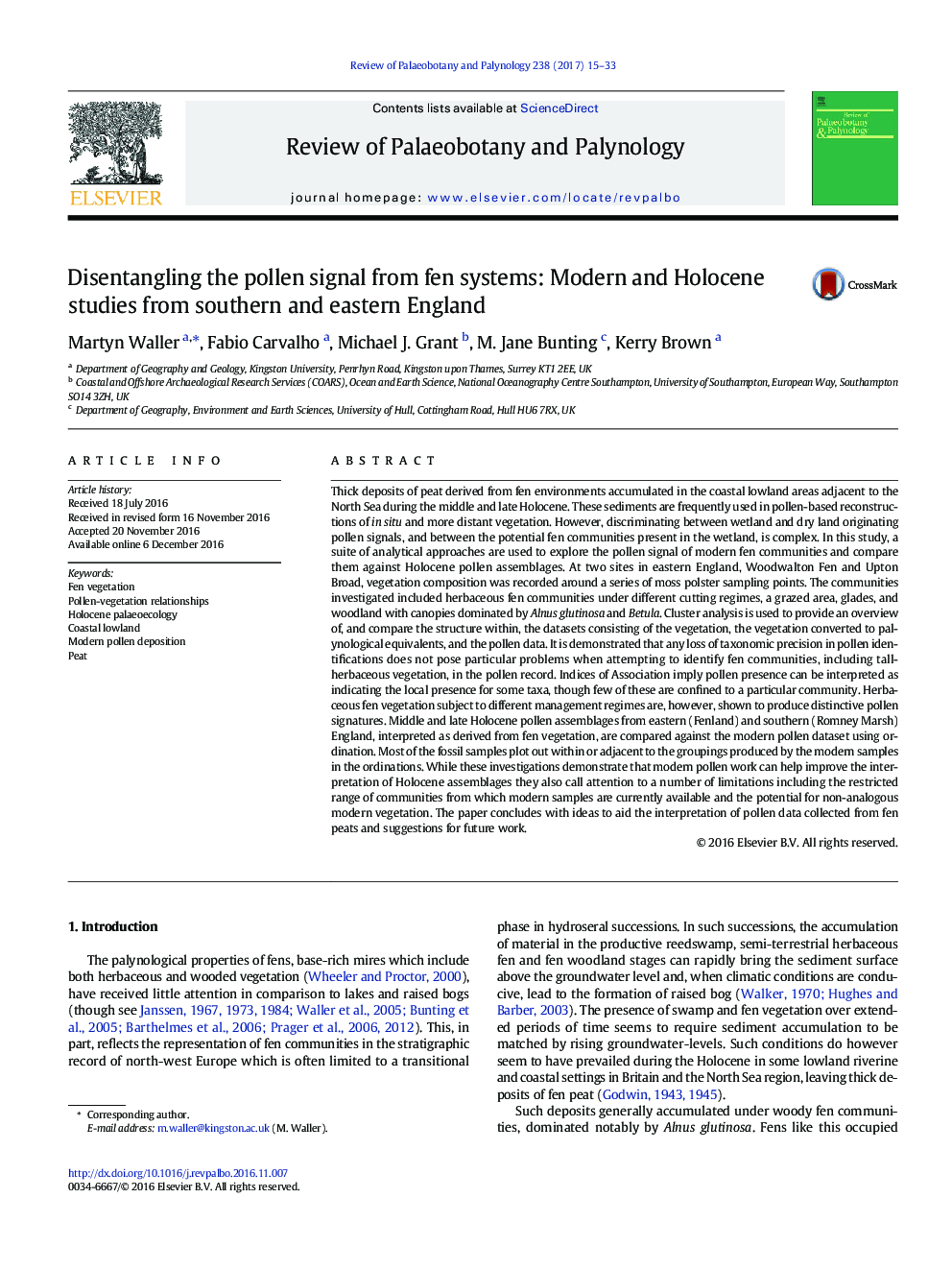| کد مقاله | کد نشریه | سال انتشار | مقاله انگلیسی | نسخه تمام متن |
|---|---|---|---|---|
| 5788399 | 1642459 | 2017 | 19 صفحه PDF | دانلود رایگان |
- Modern pollen studies help improve the interpretation of Holocene assemblages from fen peats.
- Fen vegetation subject to different management regimes produce distinctive pollen signatures.
- Loss of taxonomic precision is not a particular problem when attempting to identify fen vegetation.
- Small open-scale openings in fen woodland are likely to be difficult to detect in pollen records.
- Pollen assemblages from the Holocene are comparable to those produced by modern fen vegetation.
Thick deposits of peat derived from fen environments accumulated in the coastal lowland areas adjacent to the North Sea during the middle and late Holocene. These sediments are frequently used in pollen-based reconstructions of in situ and more distant vegetation. However, discriminating between wetland and dry land originating pollen signals, and between the potential fen communities present in the wetland, is complex. In this study, a suite of analytical approaches are used to explore the pollen signal of modern fen communities and compare them against Holocene pollen assemblages. At two sites in eastern England, Woodwalton Fen and Upton Broad, vegetation composition was recorded around a series of moss polster sampling points. The communities investigated included herbaceous fen communities under different cutting regimes, a grazed area, glades, and woodland with canopies dominated by Alnus glutinosa and Betula. Cluster analysis is used to provide an overview of, and compare the structure within, the datasets consisting of the vegetation, the vegetation converted to palynological equivalents, and the pollen data. It is demonstrated that any loss of taxonomic precision in pollen identifications does not pose particular problems when attempting to identify fen communities, including tall-herbaceous vegetation, in the pollen record. Indices of Association imply pollen presence can be interpreted as indicating the local presence for some taxa, though few of these are confined to a particular community. Herbaceous fen vegetation subject to different management regimes are, however, shown to produce distinctive pollen signatures. Middle and late Holocene pollen assemblages from eastern (Fenland) and southern (Romney Marsh) England, interpreted as derived from fen vegetation, are compared against the modern pollen dataset using ordination. Most of the fossil samples plot out within or adjacent to the groupings produced by the modern samples in the ordinations. While these investigations demonstrate that modern pollen work can help improve the interpretation of Holocene assemblages they also call attention to a number of limitations including the restricted range of communities from which modern samples are currently available and the potential for non-analogous modern vegetation. The paper concludes with ideas to aid the interpretation of pollen data collected from fen peats and suggestions for future work.
Journal: Review of Palaeobotany and Palynology - Volume 238, March 2017, Pages 15-33
